BULLFIGHTERS FROM SALAMANCA
|
|
 |
| museotaurinosalamanca.es
, 24/05/2018
|
 |
 |
 |
|
Historical relationship between bullfighters from Salamanca with individual spaces dedicated to El Niño de la Capea, Julio Robles, and Santiago Martín “El Viti”.
|
|
El Viti
|
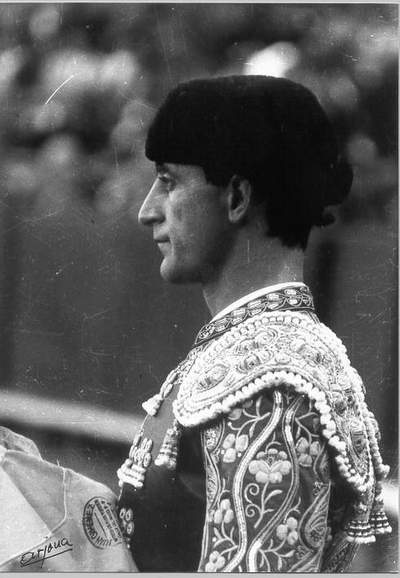 |
El Viti is a serious and elegant matador, honourable and honest in his task, brave and temperate without giving in to actions that would warrant cheap applause. Both a master of fortitude and performances that establish an unforeseen connection, his space within the museum harbours numerous treasures that bear witness to his career as one of the great bullfighters of his era.
|
|
|
On May 13rd, 1961 in Madrid, El Viti wore a white and gold costume to take his alternativa, a bullfight where a matador symbolically cedes the tools of the trade--the cape and sword--to the novice, thus giving him the right to participate in corridas with fully grown bulls. His padrino, the senior bullfighter in charge of conducting the ceremony, was Gregorio Sánchez, while Diego Puerta acted as the witness. One bullfighter and three astronauts. This is how this poster signed by Santiago Martín and the three famous astronauts from the Moon landing, Amstrong, Aldrin and Collins, could be defined. The poster of Diego Puerta, Paco Camino and El Viti would be reused on many afternoons through the 1970s.
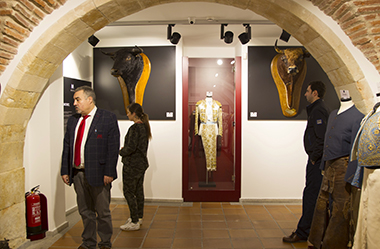
|
|
El Viti fought a handsome, jet black bull from Alipio Pérez Tabernero Sanchón’s ranch during his alternativa. El Viti managed to take one of its ears and he would take another from his second opponent, earning the matador an exit from the bullfighting ring carried upon his fans’ shoulders.
|
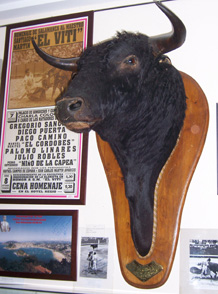 |
|
|
The sculptor Ángel Mateos sought to pay homage to El Viti, a native of the town of Vitigudino in the province of Salamanca, with this sculpture, a work that exemplifies the temperance and the elegance of this matador.
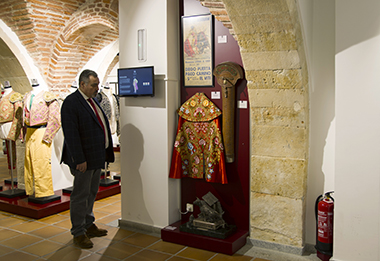
|
El Niño de la Capea
A lively and dominant bullfighter, he undoubtedly occupies a privileged position within the bullfighting world of his time. The golden trio of matadors from Salamanca consists of El Niño de la Capea, Julio Robles and Santiago Martín, El Viti.
|
|
|
|
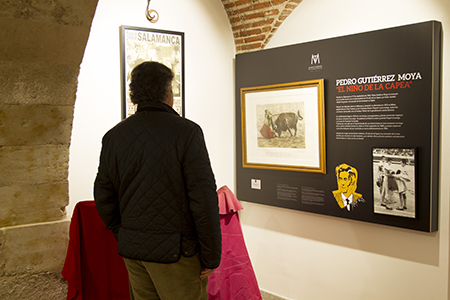
|
|
This bullfighter, a native of the neighbourhood of Chamberí, took his alternativa in 1972. A photograph illustrates the moment that Paco Camino presents him with the cape and sword in Bilbao’s bullfighting ring in the presence of the renowned matador Paquirri.
|
| Lithograph edited by the Royal Mint of Spain in which the Salamancan bullfighter appears executing the right-handed cape movement known as derechazo. Number 1 of a series of 150. |
|
This museum would be incomplete without the historic poster of the bullfight where the famed trio met for the last time at La Glorieta, Salamanca’s bullfighting ring, in 1979.
|
Julio Robles
|
|
Julio Robles was a bullfighter who always relied on his professional pride and his desire to overcome. Unbeatable in the first stage of a bullfight, he possessed one of the most stunning capes of his era. What stood out most was his calm and collected performance with the muleta (red cape) and, occasionally, even the way luck worked in his favour. Robles was characterized by his deep, classic, artful bullfighting that would make even his cape vibrate with mastery.
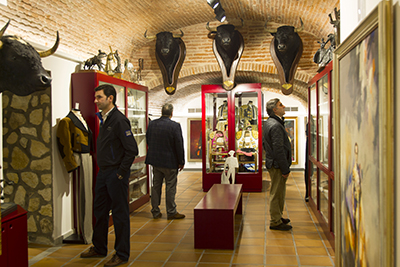
|
Julio Robles wore the pink and gold terno (a three-piece costume) that is on display at the museum the afternoon of his debut with picadores in the Lleida bullfighting ring on May 10th, 1970, with novillos (bulls between three and four years old) from María Lourdes Martín Pérez Tabernero’s ranch.
|
|
Jaranero was one of the most renowned bulls of the Salamancan bullfighter’s career. He fought it at the Festival of San Isidro in 1978 and took an ear from the animal, which belonged to Eugenio Lázaro Soria’s ranch.
|
|
La Monumental de las Ventas, Madrid’s famous bullfighting ring, became a talisman for the matador from the town of Fontiveros. There he not only slayed Sombrerito from the Aldeanueva ranch on July 7th, 1985, but also took an ear from him and three laps around the ring.
|
A great lover of faenas camperas (rural festivities during which a bullfight in the countryside was the main event) and of hunting, Robles wore the traje corto on a number of occasions, both during these rural bullfights and numerous festivals.
Oh, how many times he prayed before his chapel! He would make the sign of the Cross each afternoon before facing fear and death. Our Lady of Mount Carmel, the Cristo del Gran Poder y de Medinaceli, Saint Teresa, and the Virgin Mary were all witnesses of his many seasons of fear and joy and of triumph and failure.
|
| |
|
|
|
|
|
|
|
|
|
|